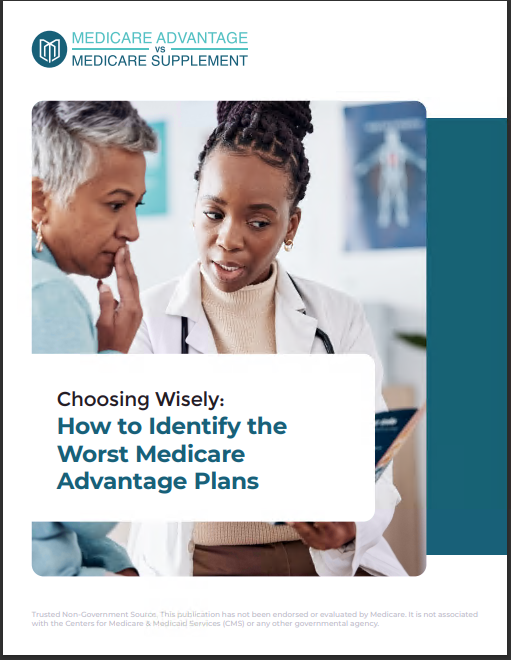Key Takeaways:
- Understanding Medicare’s four main parts is essential for making well-informed healthcare decisions that suit your unique medical needs.
- Choosing the right Medicare coverage can help optimize both your healthcare access and reduce out-of-pocket expenses.
Understanding Medicare: The Simple Basics to Help You Make Better Healthcare Choices
Medicare is a vital healthcare program that provides coverage to millions of Americans aged 65 and older, as well as certain individuals under 65 with specific disabilities or medical conditions. As one of the cornerstones of healthcare in the United States, Medicare can be both a lifeline and a source of confusion due to its numerous parts and coverage options. Understanding the simple basics of Medicare can significantly improve your ability to make well-informed decisions when it comes to your healthcare needs. This article will break down the core components of Medicare in a clear and straightforward way to help you make the best choices for yourself and your loved ones.
Medicare: What Is It and Who Qualifies?
Medicare is a federal health insurance program established in 1965, aimed primarily at providing healthcare coverage to older adults. However, it also extends its benefits to younger individuals with specific disabilities and certain medical conditions. Medicare plays a crucial role in ensuring that beneficiaries have access to necessary medical services, regardless of their financial situation. For many, Medicare is the only affordable healthcare option, making it essential to fully grasp its structure.
You may qualify for Medicare if you meet any of the following conditions:
- You are 65 years of age or older
- You are under 65 and have certain disabilities
- You are diagnosed with End-Stage Renal Disease (ESRD) or Amyotrophic Lateral Sclerosis (ALS)
Most individuals automatically become eligible for Medicare when they turn 65, especially if they’ve worked and paid into Social Security for at least 10 years. For those under 65, specific criteria related to disability and medical diagnoses determine eligibility.
The Four Main Parts of Medicare
Medicare is divided into four key parts, each covering different aspects of healthcare. Understanding how each part works will help you determine the coverage that best fits your needs.
Medicare Part A: Hospital Insurance
Medicare Part A is often referred to as “hospital insurance.” It primarily covers services related to inpatient care, such as hospital stays, skilled nursing facility care, hospice services, and some home healthcare. If you require long-term care in a hospital or skilled nursing facility, Medicare Part A will handle most of the associated costs.
For the majority of beneficiaries, Part A does not come with a monthly premium because they or their spouse have paid Medicare taxes for a sufficient period, typically at least 10 years while working. However, those who haven’t met this work requirement may need to pay a premium to access Part A.
Medicare Part B: Medical Insurance
Part B of Medicare covers outpatient medical services, including doctor visits, preventive services (such as vaccines and screenings), laboratory tests, outpatient surgeries, mental health services, and durable medical equipment like wheelchairs and walkers. It also covers some home health services that are not covered by Part A.
Unlike Part A, Medicare Part B requires most beneficiaries to pay a monthly premium. The premium amount can vary based on income levels, with higher earners paying more. However, Part B is an essential component of Medicare, particularly for those who require regular medical care and visits to healthcare providers. Without Part B, beneficiaries would be responsible for paying for many routine medical services out of pocket.
In addition to premiums, beneficiaries must also pay an annual deductible and coinsurance for services. After the deductible is met, Medicare typically covers 80% of the cost of services, leaving the beneficiary to pay the remaining 20%.
Medicare Part C: Medicare Advantage
Medicare Part C, more commonly known as Medicare Advantage, offers beneficiaries an alternative way to receive their Medicare benefits. These plans are offered by private insurance companies that are approved by Medicare and must provide the same level of coverage as Original Medicare (Parts A and B). However, many Medicare Advantage plans also offer additional benefits, such as coverage for vision, dental, hearing, and even prescription drugs.
Medicare Advantage plans often bundle all services into one package, combining hospital insurance, medical insurance, and, in many cases, prescription drug coverage (Part D). This all-in-one approach can be more convenient for some beneficiaries. However, it’s important to note that these plans typically require enrollees to use a network of healthcare providers, which may limit access to certain doctors or hospitals. Beneficiaries need to carefully review provider networks when selecting a Medicare Advantage plan.
Another consideration with Medicare Advantage is that while the plans may have lower monthly premiums compared to Original Medicare plus a Medigap policy, there may be higher out-of-pocket costs, especially for specialized care or services outside of the network. Understanding how a Medicare Advantage plan balances these costs is crucial for long-term financial planning.
Medicare Part D: Prescription Drug Coverage
Medicare Part D is the part of Medicare that provides coverage for prescription medications. This coverage is critical for beneficiaries who rely on medications to manage chronic conditions or who may need protection against high drug costs in the future. Like Medicare Advantage, Part D plans are offered by private insurers and are available to anyone enrolled in Original Medicare (Part A and/or Part B).
Each Medicare Part D plan has its own formulary, or list of covered drugs, which can vary between plans. Therefore, it’s important to choose a Part D plan that includes the medications you need. Additionally, plans can change their formularies each year, so beneficiaries should review their Part D coverage annually to ensure it still meets their needs.
Costs associated with Part D plans typically include a monthly premium, an annual deductible, and copayments or coinsurance for medications. Beneficiaries should be aware that the cost of prescription drugs can vary significantly between plans, so shopping around for the best coverage is advisable.
Key Decisions When Choosing Medicare Coverage
When you become eligible for Medicare, there are several critical decisions you’ll need to make. These choices can have a significant impact on both your healthcare and financial situation.
Original Medicare vs. Medicare Advantage: Which Is Right for You?
One of the most important decisions is whether to stick with Original Medicare (Part A and Part B) or opt for a Medicare Advantage plan (Part C). Each option has its benefits and trade-offs, so the right choice will depend on your specific healthcare needs, preferences, and financial situation.
Original Medicare offers the most flexibility when it comes to choosing healthcare providers, as it is accepted by the majority of doctors and hospitals across the country. However, Original Medicare does not include coverage for prescription drugs, vision, dental, or hearing, and beneficiaries may face higher out-of-pocket costs if they don’t have supplemental insurance, like a Medigap plan.
On the other hand, Medicare Advantage plans often include additional benefits, such as prescription drug coverage, and may have lower out-of-pocket costs. However, these plans often require beneficiaries to use healthcare providers within a specific network, which can be limiting if you have preferred doctors or hospitals outside that network.
Do You Need Medigap (Medicare Supplement Insurance)?
For beneficiaries who choose Original Medicare, purchasing a Medigap policy can help cover some of the out-of-pocket costs that Medicare Parts A and B don’t cover, such as copayments, coinsurance, and deductibles. Medigap plans are offered by private insurance companies and come in several standardized plan types, each offering a different level of coverage.
Medigap can be an important consideration for individuals who anticipate needing frequent or high-cost healthcare services. However, Medigap policies come with an additional monthly premium, and they are not available to individuals enrolled in Medicare Advantage plans.
The Importance of Prescription Drug Coverage
If you opt for Original Medicare without enrolling in a Medicare Advantage plan that includes prescription drug coverage, you’ll need to select a Medicare Part D plan to cover your medications. Failing to enroll in a Part D plan when you’re first eligible can result in a late enrollment penalty, so it’s important to make this decision early.
Choosing the right Part D plan requires careful consideration of the medications you take and whether they are included in the plan’s formulary. Additionally, you’ll want to evaluate the cost structure of each plan, as some may offer lower copayments or coinsurance for certain drugs.
Enrollment Periods: Don’t Miss Key Deadlines
Timing is critical when it comes to enrolling in Medicare. Missing key enrollment periods can result in delayed coverage and financial penalties that last for as long as you have Medicare.
- Initial Enrollment Period (IEP): This is a seven-month window that begins three months before your 65th birthday, includes your birthday month, and ends three months after.
- General Enrollment Period (GEP): If you miss your IEP, you can enroll during the GEP, which runs from January 1 to March 31 each year. However, late enrollment penalties may apply, and your coverage will not begin until July 1.
- Annual Enrollment Period (AEP): Occurring each year from October 15 to December 7, the AEP allows you to make changes to your Medicare Advantage or Part D coverage.
A Final Thought on Medicare Choices
Medicare offers vital healthcare coverage for millions of Americans, but making the right decisions about your coverage can help ensure that you get the most out of your benefits. By understanding the basics of Medicare Parts A, B, C, and D, and reviewing your options during key enrollment periods, you can tailor your healthcare plan to best suit your needs.
Whether you opt for Original Medicare, Medicare Advantage, or add a Medigap policy, being proactive and informed is the key to optimizing both your coverage and out-of-pocket costs. It’s essential to periodically reassess your plan as your healthcare needs may change over time, and certain plans may introduce new benefits or costs. Being well-prepared will make a significant difference in your experience with Medicare.
To navigate the complexities of Medicare, take advantage of resources like Medicare.gov and licensed insurance agents who specialize in Medicare. They can provide valuable insights, help you compare plans, and ensure that your healthcare coverage aligns with your medical needs and financial considerations.
Contact Information:
Email: [email protected]
Phone: 9195555678










